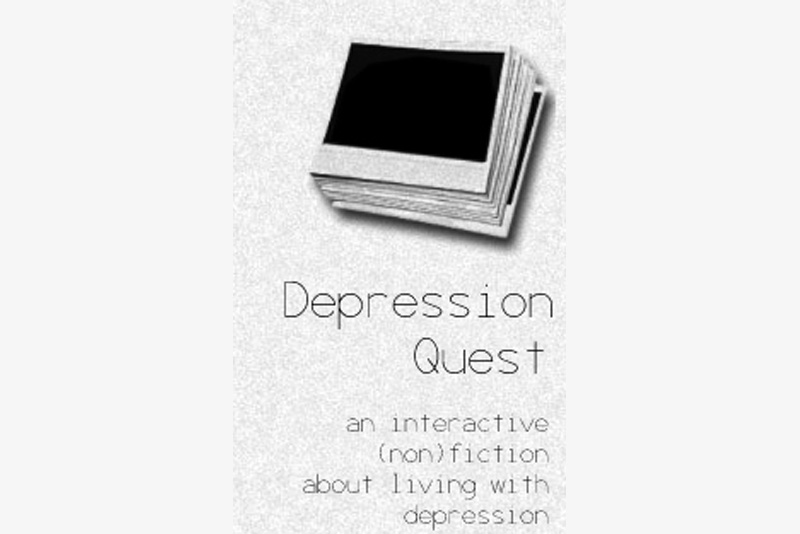How to Draw Anime & Game Characters

The theory behind Tadashi Ozawa's book "How to Draw Anime & Game Characters, Vol. 2: Expressing Emotions" is absolutely a good one. If you're going to portray a character - whether it's for a video game, a graphic novel, or an artistic creation, you want to get the emotions spot-on. The difference between a so-so character and one a viewer can emotionally connect with is often in those emotions. They used to say that computer games could never get a player to emotionally invest in a character because the characters were static and robotic. While that might have been true in the days of Pong and Space Invaders, we absolutely now have computer games and storylines which involve characters we cry over and cheer with. It often comes down to how we emotionally connect with those characters.
So if I believe so whole-heartedly in the underlying premise that having an exquisitely-drawn character, with a rich emotional range, is key to that connection, what are my issues with this book?
First, the book portrays a range of character types - young girl, mature man, and so on. But it only covers extremely simple facial expressions for each one. Joy. Anger. Etc. If we're going to have 153 pages, it makes far more sense to provide more emotions. I think most of us can figure out how to manage a young girl vs a teenage girl. To show the exact same emotions on both sets of faces does us little good. Give us a greater range of options so we can work on those important distinctions.
Next, and this one annoyed me over and over in the book, there are wild stereotypes presented which greatly hinder a graphic designer. He'll say things like "Girls have slightly thick and straight eyebrows, expressing a clear personality and a single-mindedness borne of a hatred of losing." What?? This is all girls? And all girls must be drawn like this? Why not show us a selection of options, just like in real life? But it's not just girls. For the guy - "His youthful resolution and single-mindedness are expressed by the large black pupils." OK, so this is a book about drawing only single-minded characters. Why?
The female robot pilot is "a manly woman" - what does that even mean? That she's aggressive? Because women aren't aggressive? For the woman detective - "Even though she has strength of character and can make her way for herself, she, in fact, has a very womanly side too." What, because having a strong character and being able to take care of yourself are NOT traits of a woman? For Student Character (Girl) - "Her attitude is clear, strong, and even boyish." Again - what does that even mean? That she likes sports? Because only boys do?
We move on to Game Character (Girl) - "This character is truly vigorous hence her emotions are boldly outward ... think of her poses as being boyish." Good God Almighty. And in setting a scene, "drawing the blinds, the picture frame, the desk, and other small items in the background explains that this is a man's office." Oh, because a woman would have curtains in her office?
These are just a tiny fraction of the statements in the book. It goes on and on and on.
With all the great options out there for studying emotion in drawing, this one is just so full of bizarre stereotypical comments and suggestions that I can't recommend it. If you were trying only to draw these exact characters, with these exact small set of emotions, maybe - but even then I'd think the other books would do you better to help you develop a full range of options.
So if I believe so whole-heartedly in the underlying premise that having an exquisitely-drawn character, with a rich emotional range, is key to that connection, what are my issues with this book?
First, the book portrays a range of character types - young girl, mature man, and so on. But it only covers extremely simple facial expressions for each one. Joy. Anger. Etc. If we're going to have 153 pages, it makes far more sense to provide more emotions. I think most of us can figure out how to manage a young girl vs a teenage girl. To show the exact same emotions on both sets of faces does us little good. Give us a greater range of options so we can work on those important distinctions.
Next, and this one annoyed me over and over in the book, there are wild stereotypes presented which greatly hinder a graphic designer. He'll say things like "Girls have slightly thick and straight eyebrows, expressing a clear personality and a single-mindedness borne of a hatred of losing." What?? This is all girls? And all girls must be drawn like this? Why not show us a selection of options, just like in real life? But it's not just girls. For the guy - "His youthful resolution and single-mindedness are expressed by the large black pupils." OK, so this is a book about drawing only single-minded characters. Why?
The female robot pilot is "a manly woman" - what does that even mean? That she's aggressive? Because women aren't aggressive? For the woman detective - "Even though she has strength of character and can make her way for herself, she, in fact, has a very womanly side too." What, because having a strong character and being able to take care of yourself are NOT traits of a woman? For Student Character (Girl) - "Her attitude is clear, strong, and even boyish." Again - what does that even mean? That she likes sports? Because only boys do?
We move on to Game Character (Girl) - "This character is truly vigorous hence her emotions are boldly outward ... think of her poses as being boyish." Good God Almighty. And in setting a scene, "drawing the blinds, the picture frame, the desk, and other small items in the background explains that this is a man's office." Oh, because a woman would have curtains in her office?
These are just a tiny fraction of the statements in the book. It goes on and on and on.
With all the great options out there for studying emotion in drawing, this one is just so full of bizarre stereotypical comments and suggestions that I can't recommend it. If you were trying only to draw these exact characters, with these exact small set of emotions, maybe - but even then I'd think the other books would do you better to help you develop a full range of options.

Related Articles
Editor's Picks Articles
Top Ten Articles
Previous Features
Site Map
Follow @lisavideogames
Tweet
Content copyright © 2023 by James Shea. All rights reserved.
This content was written by James Shea. If you wish to use this content in any manner, you need written permission. Contact Lisa Shea for details.



